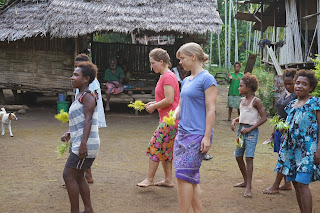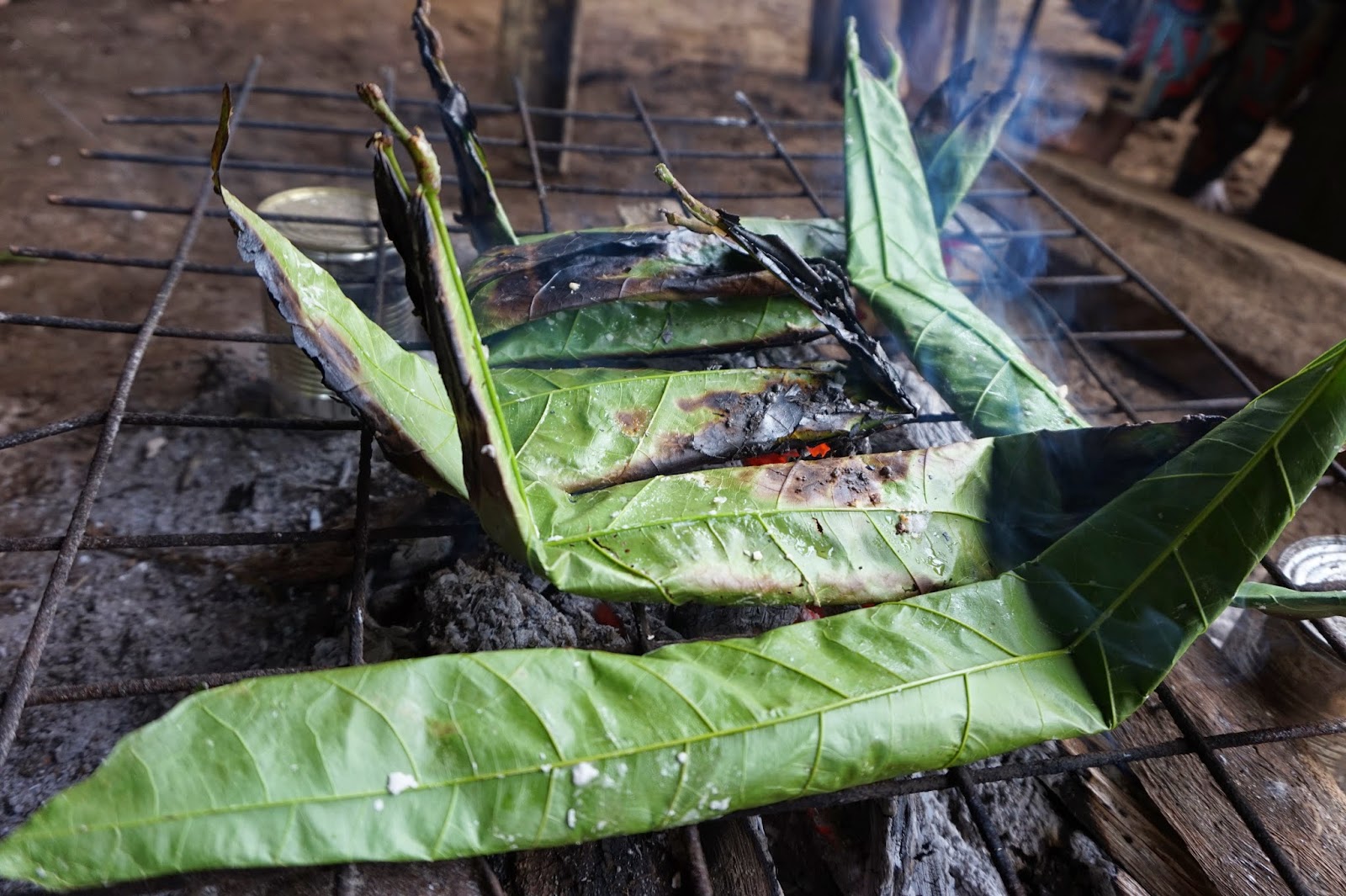Week 2 Part 2: Tumbuna Singsing (tranditional dancing/celebration)

Since our arrival in the village of Wargiden our Host Papa had been telling us that he’d have the ladies of the village teach us the village’s traditional dances so that we could have a Tumbuna Singsing (a traditional celebration and dance) before we left. True to his word, Papa summoned us to his veranda facing the sea. We arrived to find the ladies of the village talking in excited whispers as a few men of the village thumped experimentally on their kundu (drums) to ensure they were in tune. dancing with our village family Tumbuna Singsing style Soon, April and I had been guided into one of two lines to stand behind one of our host sisters or cousins to learn the steps of the traditional dances. Flowers were pressed into our hands and the ladies quieted down, waiting for the drums to begin. Thump, thump, thump. The drums began to pound as the men sang out strong in the captivating and ancient sounding strains of Wargiden’s traditional song. April and I did our best to follo...
